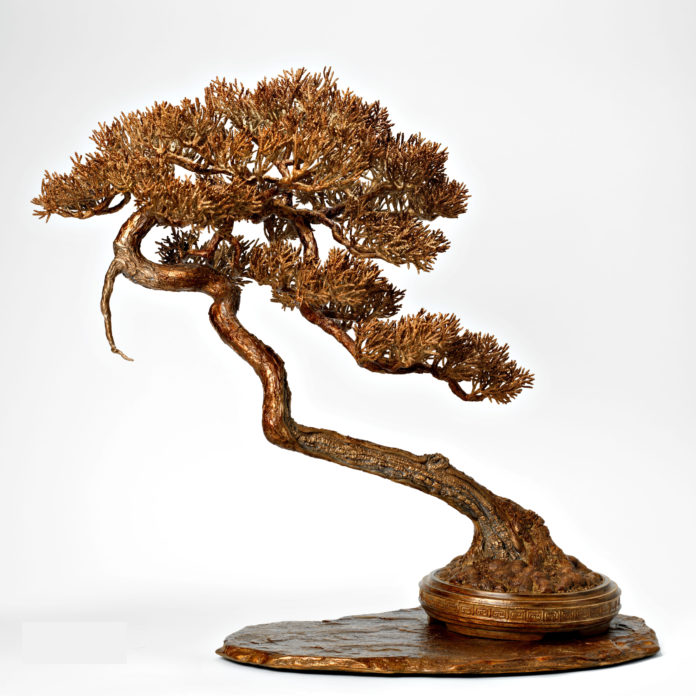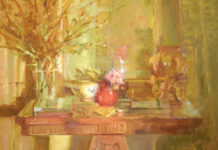“Wish for More Wishes”
Contact Matthew Sudlow through www.matthewsudlow.com for more information.
My fascination with the art of bonsai began over thirty years ago. Developing the process to cast intricate bronze bonsai trees, required roughly ten years of practice.
My mother was an active gardener and helping her earned me the affectionate nickname “hole digger.” One dreary winter day, she surprised me with a trip to the Philadelphia flower show.
The event was packed and before I knew it, I was swept up by a river of visitors and set adrift into the “hall of the moon gates,” a bonsai exhibition. On either side of a hallway, various trees were displayed through large round portholes. When I peered through these “moon gates”, I was instantly transported into a fantastic bonsai universe.
I have always been fascinated by the magic of nature: dinosaurs, Blue whales, giant Sequoia Redwood trees, telescopes, microscopes, and even a few unhappy snapping turtles collected from the creek near my house. Yet, bonsai was something truly bewildering and more interesting than big or small, magnified or snappy. It was something which simply shouldn’t be! I was instantly hooked.
As an adult, I experimented with a collection of my own living bonsai trees and as my interests evolved, and I developed my own bronze process, I discovered lots of things that shouldn’t be. For instance, I shouldn’t be able to make a mold of an entire tree but I can. I shouldn’t be able to use fragile wax for my patterns but I do. Nor, should I be able to instantly cast an entire tree and nearly eliminate the need for fabrication, or effortlessly polish my bronze castings and finish the most delicate features of my sculptures with rich, transparent patina without using any chemicals.
One of the most interesting aspects of my work is the actual casting of the bronze. Tracy Witherow, of ART Research Enterprises, once said to me—“Matt, you should name every piece you do, Finger’s Crossed!” There’s a good reason for her comment. I have to perfectly execute every single step, leading up to and including the actual casting, to avoid a total disaster on every tree.
Why adopt a casting process which essentially requires that I hit a hole-in-one on every step, every time? The answer is simple, it makes the accomplishment that much sweeter and that much more exhilarating. I get to transform a gale into a breeze and create a beautiful and timeless bonsai tree! I hope you enjoy!
-Matthew Sudlow
View more of Matthew’s work at MatthewSudlow.com








